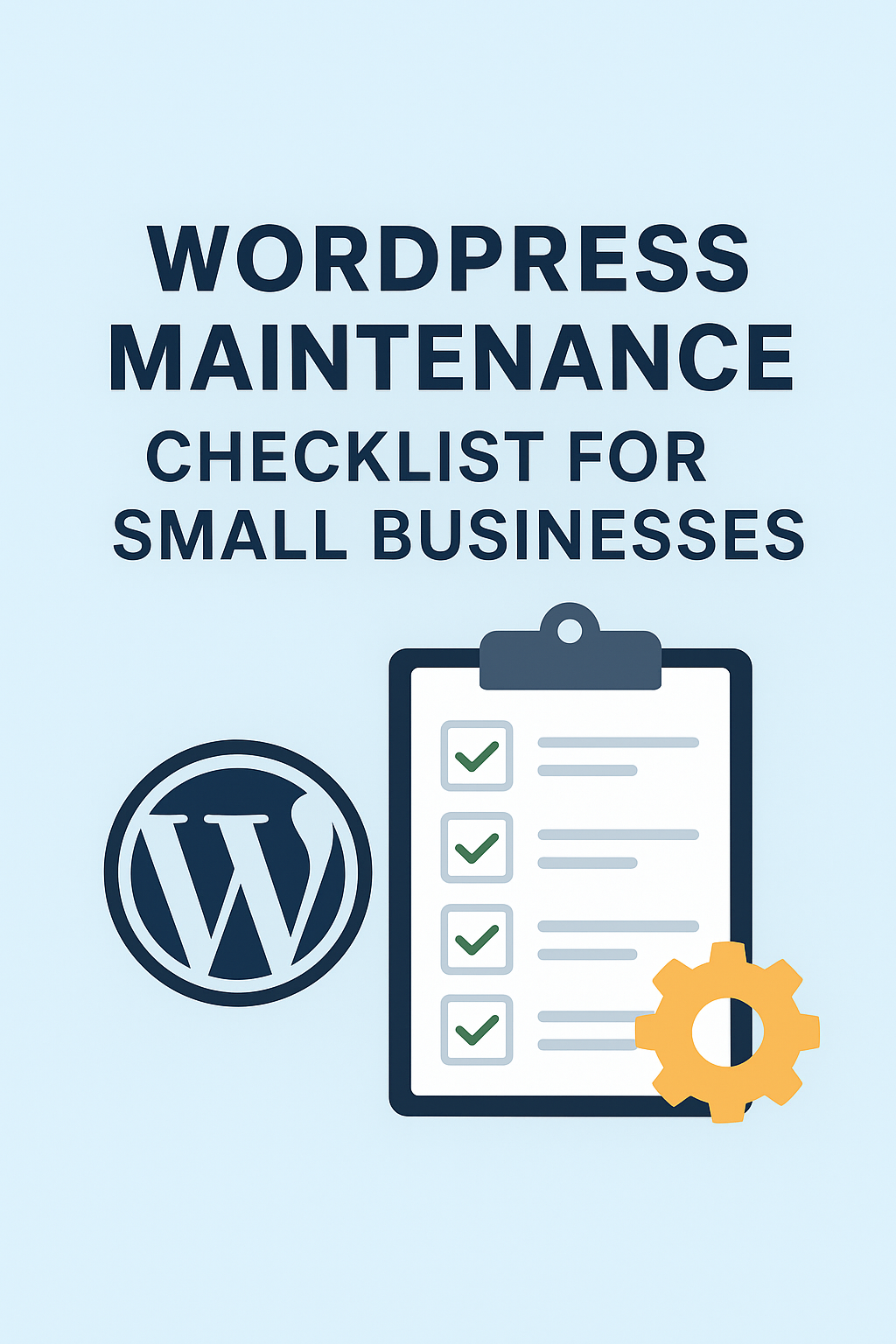Running a small business website on WordPress is a smart choice — it’s flexible, scalable, and easy to manage. But to keep your site performing well, secure, and visible to customers, regular maintenance is essential. Neglecting updates and optimizations can lead to downtime, security vulnerabilities, and a drop in search rankings.

Here’s a practical WordPress maintenance checklist every small business owner should follow to keep their site running smoothly and professionally.
- Update WordPress Core, Themes, and Plugins
Regular updates are critical for performance and security.
Log in to your WordPress dashboard weekly.
Update the WordPress core whenever a new version is released.
Keep themes and plugins up to date to prevent compatibility issues.
Delete unused plugins or themes — they can become security risks.
Tip: Always create a backup before applying any updates.
- Backup Your Website Regularly
A backup ensures your site can be restored quickly if anything goes wrong.
Set up automatic backups using plugins like UpdraftPlus or Jetpack Backup.
Store copies both on your server and offsite (Google Drive, Dropbox, or cloud storage).
Schedule backups weekly or daily for high-traffic websites.
- Optimize Website Speed
Slow websites drive visitors away and hurt SEO.
Use caching plugins such as WP Rocket or W3 Total Cache.
Optimize images with tools like Smush or ShortPixel.
Minimize CSS, JavaScript, and HTML files.
Use a reliable hosting provider optimized for WordPress.
Pro tip: Test your site speed using Google PageSpeed Insights or GTmetrix.
- Strengthen Website Security
Small business websites are common targets for hackers. Protect yours by:
Installing security plugins like Wordfence or Sucuri.
Using strong admin passwords and limiting login attempts.
Enabling SSL (HTTPS) for secure connections.
Regularly scanning your site for malware.
- Check and Fix Broken Links
Broken links can frustrate visitors and affect your SEO.
Use tools like Broken Link Checker or Ahrefs to find and fix dead links.
Redirect outdated URLs to relevant pages using Redirection plugin.

- Review Website Analytics
Track how visitors interact with your website.
Use Google Analytics and Search Console to monitor traffic and performance.
Identify top-performing pages and areas needing improvement.
Adjust content and SEO strategies based on data insights.
- Test Website Forms and Functionality
Ensure all contact forms, payment gateways, and interactive features work properly.
Submit a test form monthly to confirm delivery.
Check checkout processes for eCommerce sites.
Verify mobile responsiveness across different devices.
- Update Content and SEO
Keeping content fresh boosts engagement and rankings.
Review blog posts, product pages, and images quarterly.
Add new keywords and update meta tags for SEO.
Remove outdated information or broken media.
- Monitor Uptime and Performance
Downtime means lost customers.
Use uptime monitoring tools like UptimeRobot or Pingdom.
Set alerts for performance drops or outages.
Contact your hosting provider immediately if issues persist.
- Schedule a Quarterly Technical Review
Every few months, perform a deep audit of your WordPress setup:
Review your hosting performance.
Check for database optimization.
Test website backups.
Clean up old revisions and spam comments.

Conclusion
Your website is your online storefront — it needs consistent care. A proactive WordPress maintenance routine ensures your site remains secure, fast, and optimized to attract customers and support your business growth.
If you don’t have time to handle maintenance yourself, consider hiring a WordPress support service to manage updates, backups, and performance monitoring for you

Leave a Reply